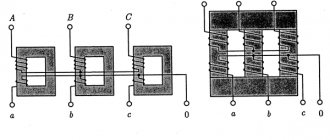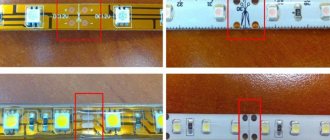III group
Electrical and electrical engineering personnel. Assigned to employees involved in the operation of electrical equipment, it gives the right to independently install equipment and connect its electrical networks, as well as the right to inspect or service electrical installations with voltages up to 1000 V.
Example of positions:
- electrician
- electrician
- auto electrician
- repairman
- electric arc furnace operator
- electrician
- electromechanic
Group V
Electrical technical personnel, including administrative and technical personnel. Management of the organization, specialists, engineers and technical workers. Employees organize, manage and carry out work at workplaces and in production units. They also carry out control and technical supervision of work in electrical installations up to and above 1000 V and at power industry enterprises.
Example of positions:
- Chief Power Engineer
- energy drink
- occupational safety specialist in electrical installations up to and above 1000 V at power industry enterprises
- inspectors of GIT and Rostechnadzor who have access to control electrical installations up to and above 1000 V
Requirements for the presence of electrical safety groups
Electrical safety groups, starting from III and above, can only be assigned to workers who have reached the age of 18.
For occupational safety specialists, as a rule, they are assigned group IV in electrical safety with the right to inspect electrical installations (clause 6 of the note to Appendix 1 of the Rules on labor protection during the operation of electrical installations, approved by Order of the Ministry of Labor dated July 24, 2013 No. 328n).
A group is also assigned to the head of the organization if the manager personally inspects electrical installations and is involved in operation, installation and repair. Otherwise, Group I will be sufficient for the leader. Heads of structural units who have electrical personnel subordinate to them must be assigned access groups no lower than those of their subordinates. Employees from among the administrative and technical personnel with a tolerance group of at least IV or V (for electrical installations up to and above 1000 V) are appointed as responsible managers of work in electrical installations.
Electrical safety group: requirements for personnel
Electrical safety group I Electrical safety group II Electrical safety group III Electrical safety group IV Electrical safety group V It should be borne in mind that servicing existing electrical installations, as well as carrying out operational switching in them, organizing and performing repair, installation, adjustment work, testing, measurements and diagnostics must be carried out by electrical personnel with the appropriate electrical safety group.
At the same time, persons working in electrical installations must have a certain amount of knowledge, skills and abilities that will allow them to carry out high-quality measures for the safe operation and maintenance of machines, devices, lines and auxiliary equipment included in electrical installations.
However, it is necessary to take into account that, as stated in sub. 4.2.2 clause 4.2 of the technical code of established practice “Safety rules for the operation of electrical installations” (TKP 427-2012 (02230), approved by order of the Ministry of Energy of the Republic of Belarus dated November 28, 2012 No. 228 “On approval and enforcement of the technical code established practice", which came into force on March 1, 2013, with the amendment introduced by Order of the Ministry of Energy dated November 23, 2021 No. 307 and put into effect on January 1, 2021, the requirements for assigning electrical safety groups to workers established in Appendix B to this TCH are minimal and can be supplemented by the employer’s decision.
Therefore, based on the above, we can conclude that the basic requirements regarding the assignment of electrical safety groups are defined in TKP 427-2012. At the same time, when testing personnel knowledge on electrical safety issues, in addition to the above-mentioned TKP, in particular, it is also necessary to be guided by:
- Instructions on the procedure for training, internship, instruction and testing the knowledge of workers on labor protection issues, approved by Resolution of the Ministry of Labor and Social Protection of the Republic of Belarus dated November 28, 2008 No. 175;
- Resolution of the Ministry of Labor and Social Protection of the Republic of Belarus dated December 30, 2008 No. 210 “On commissions for testing knowledge on labor protection issues”, which approved: Regulations on the commission of the republican government body and other state organization subordinate to the Government of the Republic of Belarus for testing knowledge on labor protection issues; Regulations on the commission of the local executive and administrative body to test knowledge on labor protection issues; Regulations on the organization’s commission to test workers’ knowledge on labor protection issues;
- technical code of established practice “Rules for the technical operation of electrical installations of consumers” (TKP 181-2009 (02230), approved and put into effect on September 1, 2009 by the resolution of the Ministry of Energy of the Republic of Belarus dated May 20, 2009 No. 16 “On approval and introduction into the validity of the technical code of established practice", as amended by the Decree of the Ministry of Energy of the Republic of Belarus dated November 27, 2021 No. 43, which came into force on January 1, 2019;
- technical code of established practice “Rules for the application and testing of protective equipment used in electrical installations” (TKP 290-2010 (02230), approved by Resolution of the Ministry of Energy of the Republic of Belarus dated December 27, 2010 No. 74 “On approval and enforcement of the technical code of established practice "and entered into force on March 21, 2011;
- technical code of established practice “Electrical installations for voltages up to 750 kV. Overhead power lines and conductors, distribution devices and transformer substations, electric power and battery installations, electrical installations of residential and public buildings. Rules for design and protective measures for electrical safety. Electricity metering. Acceptance testing standards" (TKP 339-2011 (02230), approved by Decree of the Ministry of Energy of the Republic of Belarus dated August 23, 2011 No. 44 "On approval and implementation of the technical code of established practice" and put into effect on December 1, 2011 ., as last modified by the Ministry of Energy Resolution No. 17 dated May 29, 2021 and entered into force on September 1, 2021;
- other regulatory legal acts and technical regulatory legal acts.
In turn, when deciding on permission to work in electrical installations, the following should be taken into account.
- Persons under 18 years of age cannot be allowed to work independently on electrical installations. This provision is formulated in sub-clause. 4.2.3 clause 4.2 TKP 427-2012.
- Trainees of educational institutions are allowed to stay in existing electrical installations under the constant supervision of a person from electrical personnel with an electrical safety group of no lower than III (in installations with voltages up to 1000 V) and no lower than IV (in installations with voltages above 1000 V) (subclause 4.2.4 of the said TCP ).
- Those working in electrical installations must undergo medical examinations in accordance with the Instructions on the procedure for conducting mandatory medical examinations of workers, approved by Resolution of the Ministry of Health of the Republic of Belarus dated April 28, 2010 No. 47 “On approval of the Instructions on the procedure for conducting mandatory medical examinations of workers and invalidating certain regulations Ministry of Health of the Republic of Belarus" (subclause 4.2.5 clause 4.2 of TCP 427-2012).
- Training, internship, instruction and testing of knowledge of workers in electrical installations on labor protection issues are carried out in accordance with the Instruction on the procedure for training, internship, instruction and testing of knowledge of workers on labor protection issues, approved by the resolution of the Ministry of Labor and Social Protection of the Republic of Belarus dated November 28, 2008 No. 175, Resolution of the Ministry of Labor and Social Protection of the Republic of Belarus dated December 30, 2008 No. 210 “On commissions for testing knowledge on labor protection issues.” Testing knowledge on occupational safety issues with confirmation from the electrical safety group of electrical personnel directly servicing existing electrical installations or performing adjustment, electrical installation, repair work or preventive tests in them, as well as for personnel who have the right to conduct operational negotiations, issue orders, orders and organize these work must be carried out at least once a year (subclause 4.2.6 of TCP 427-2012).
- Persons from electrical technical personnel who have the right to carry out work that is subject to special labor protection requirements must have an entry in the labor protection certificate for the right to perform special work.
Such work includes:
- steeplejack work;
- work under voltage on live parts: cleaning, washing and replacing insulators, repairing wires, lubricating cables;
- testing electrical equipment with increased voltage supplied from an external source;
- maintenance of the brush apparatus on a running generator;
- maintenance of the brush apparatus with a running electric motor;
- work inside tanks of power transformers (arc suppression reactors);
- maintenance of batteries and chargers;
- working with a pulse meter for power lines;
- working with electrical clamps and electrically insulating rods for taking measurements.
The list of works that are subject to special labor protection requirements is approved by the head of the organization, taking into account the requirements of regulatory legal acts (LLA) (subclause 4.2.7 of the specified TCP).
6. Those working in electrical installations must be provided with electrical protective equipment in accordance with the nature of the work and must use them correctly during work. Personnel located in rooms with operating power equipment of power plants and substations (except for control panels, relays and the like), in closed switchgears (SGD) and open switchgears (OSD), in wells, trenches, as well as those involved in maintenance and capital repairs of overhead power lines (OHT), is required to use protective helmets (subclause 4.2.8, clause 4.2 of the said TCP). 7. Workers who discover violations of the requirements of TKP 427-2012, other technical normative legal acts (TNLA), normative legal acts, as well as those who notice a malfunction of the electrical installation or electrical protective equipment, are obliged to immediately report this to their immediate supervisor, and in his absence, to their superior manager. In cases where a malfunction in an electrical installation poses a clear danger to workers or objects, workers who discover it are obliged to take measures to prevent unauthorized persons from approaching the electrical installation, and then report this to their immediate supervisor, and in his absence, to a superior manager (subclause 4.2.9 TKP 427-2012). 8. Those working in electrical installations must be trained in how to free a victim from the effects of electric current and provide first aid to victims in accidents (subclause 4.2.10 of the said TKP).
For information
According to clause 3.38 of TKP 427-2012, an electrical installation is understood as a set of machines, apparatus, lines and auxiliary equipment (together with the structures and premises in which they are installed) intended for the production, conversion, transformation, transmission, distribution of electrical energy and its conversion into another type of energy. Electrical technical personnel: administrative-technical, operational, operational-repair, repair personnel of the organization performing maintenance of electrical installations, operational switching, installation, adjustment, testing, measurements and diagnostics in electrical installations, having electrical safety group II and higher (clause 3.36 of TCP 427 -2012).
Electrotechnological personnel: personnel of the organization operating electrical technological installations (electric welding, electrolysis, electrothermy, etc.), as well as complex energy-saturated production and technological equipment, the operation of which requires constant maintenance and adjustment of electrical equipment, electric drives, hand-held electromechanical tools, portable and mobile electrical receivers with electrical safety group II and higher. In their rights and responsibilities during the operation of electrical technological installations, electrical technological personnel are equal to electrical technical personnel (clause 3.37 of TCP 427-2012)*.
*Section 3 of TCP 427-2012 (clauses 3.1-3.39) defines the terms and definitions, designations and abbreviations used in this technical code of established practice.
According to sub. 4.2.30 clause 4.2 of TKP 181-2009, electrical personnel should be assigned an electrical safety group, taking into account knowledge of the requirements of normative legal acts, technical norms and regulations on the design, technical operation and safety precautions during the operation of electrical installations in the scope of the requirements of this TKP, as well as TKP 427-2012, TKP 339-2011, other legal acts, technical regulations and local acts, compliance with which is part of his professional (official) responsibilities.
A commission consisting of at least 3 people must assign (confirm) an electrical safety group, but the following must be taken into account:
- for the person responsible for the electrical equipment of the Consumer, his deputy and the labor protection specialist who controls the electrical equipment according to his official position - consisting of the chief engineer or the head of the organization (chairman), the state inspector for energy supervision and a representative of the labor protection department (or the trade union committee of the organization) ;
- for heads and deputy heads of structural units of electrical facilities and persons responsible for the electrical facilities of production workshops and divisions of enterprises - as part of the person responsible for the electrical facilities of the Consumer or his deputy (chairman), a labor protection specialist who has been tested by the commission according to listing “1” (representative of the labor protection department), representative of the energy service;
- for the rest of the engineering and technical personnel - consisting of a person who has been tested by the commission according to listing "2", having electrical safety group V (or IV for electrical installations with voltages up to 1000 V), - the chairman and representatives of the energy service, labor protection department or trade union committee;
- for the rest of the electrical personnel, several commissions can be created, the composition of which is determined and approved by the person responsible for the Consumer’s electrical equipment;
- electrical personnel of small enterprises, organizations and institutions that do not have personnel to serve on commissions must be sent for assignment (confirmation) of an electrical safety group to commissions created at higher organizations with the participation of the person responsible for the electrical equipment of the enterprise where the person being inspected works, or undergo assignment (confirmation) of the electrical safety group in the territorial division of the state energy supervision (subclause 4.2.38 of TKP 181-2009).
In sub.
4.2.39 TCP 181-2009 establishes that the assignment (confirmation) of an electrical safety group must be carried out by the commission of the enterprise where the person being inspected works. It is not allowed to assign (confirm) an electrical safety group to any other commission, with the exception of the persons mentioned in listing 4.2.38 “5”). If it is impossible for the Consumer to ensure the composition of the commission in accordance with the above requirements, the assignment (confirmation) of an electrical safety group is carried out in the commission of the state energy supervision body. Commissions of the state energy supervision body are created by order of the head of the territorial body of state energy supervision and consist of the chairman of the commission, the deputy chairman of the commission and members of the commission from among state (senior state) energy supervision inspectors. The results of the assignment (confirmation) of an electrical safety group in the commission of the state energy supervision body are formalized in accordance with subparagraph. 4.2.40 TKP 181-2009, and an extract from the assignment (confirmation) journal is issued to the electrical personnel of the electrical safety group.
It is necessary to pay attention to the fact that the assignment (confirmation) of an electrical safety group is carried out and formalized individually through an oral interview or using computer technology, the results are entered in the log of assignment (confirmation) to the electrical personnel of the electrical safety group (Appendix D to TCP 181-2009) and in the insert of the occupational safety certificate for electrical personnel (Appendix E to the specified TCP) (subclause 4.2.40 of TCP 181-2009).
According to sub. 4.2.41 of the said TKP certificate gives the right to service electrical installations as administrative, technical, operational, maintenance or operational maintenance personnel.
Confirmation of the electrical safety group is carried out according to the approved schedule within the following periods:
- for electrical personnel directly organizing and carrying out work on servicing existing electrical installations or performing adjustment, electrical installation, repair work or preventive tests in them, as well as for personnel who have the right to issue orders, instructions, and conduct operational negotiations - at least once a year ;
- for administrative and technical personnel not belonging to the previous group, as well as for labor protection specialists authorized to inspect electrical installations and having the right to individually inspect electrical installations - at least once every three years (subclause 4.2.33 of the specified TCP).
Confirmation of the electrical safety group is carried out:
- when introducing new regulatory legal acts, technical regulatory legal acts on issues of design, technical operation and safety precautions during the operation of electrical installations;
- when installing new equipment, reconstructing or changing the main electrical and technological circuits (the need to confirm the electrical safety group in this case is determined by the technical manager of the Consumer);
- upon appointment to a new position, transfer to another job;
- in case of violation by employees of the requirements of regulatory legal acts, technical regulatory legal acts on issues of design, technical operation and safety precautions during the operation of electrical installations;
- at the request of state energy supervision authorities;
- with a break in work in this position for more than a year.
The date of confirmation of the electrical safety group in these cases is reported no later than 15 days in advance (subclause 4.2.36, clause 4.2 of TCP 181-2009).
And now directly about the groups on electrical safety (Appendix B to TCH 427 - 2012). Electrical safety group I (1 group for electrical safety is assigned to)
The minimum length of service in electrical installations in months for this electrical safety group is not standardized, as for personnel of organizations:
- does not have a general basic or general secondary education;
- having a general basic or general secondary education;
- from among persons with vocational, technical, general secondary education, who have undergone vocational training (retraining);
- with secondary specialized, higher technical education.
The minimum length of work experience in electrical installations in months for the specified electrical safety group is not standardized for trainees:
- educational institutions of vocational education;
- higher and secondary specialized educational institutions.
The following requirements are imposed on the personnel of electrical safety group I:
- understanding of the danger of electric current, the danger of approaching live parts;
- practical skills in providing first aid to victims.
Electrical safety group II
The minimum work experience in electrical installations in months for this electrical safety group should be 1 month after training under a program approved by the technical manager (chief engineer) of the organization or a higher organization, for persons:
- without general basic or general secondary education;
- having general basic or general secondary education.
For employees of organizations from among persons with vocational-technical, general secondary education, who have undergone vocational training (retraining), with secondary specialized, higher technical education, trainees of educational institutions of vocational education, higher and secondary specialized educational institutions, the minimum work experience in electrical installations in months for this group on electrical safety is not standardized.
The following requirements are imposed on the personnel of electrical safety group II:
- basic technical knowledge of the electrical installation and its equipment;
- a clear understanding of the danger of electric current, the danger of approaching live parts;
- knowledge of basic labor protection requirements when working in electrical installations;
- ability to practically provide first-aid to victims.
Electrical safety group III
The minimum work experience in electrical installations in months for this electrical safety group should be 3 months in the previous group for personnel of organizations who do not have a general basic or general secondary education.
For personnel of organizations with general basic or general secondary education, vocational and general secondary education, who have undergone professional training (retraining), the minimum work experience in months must be 2 months in the previous electrical safety group. For employees with specialized secondary or higher technical education, the minimum work experience in months should be 1 month of work in the previous group.
For trainees of educational institutions of vocational education, higher and secondary specialized educational institutions, the minimum work experience in electrical installations in months for this electrical safety group should be:
- 2 months in the previous group for trainees of vocational education institutions;
- 1 month in the previous group for trainees of higher and secondary specialized educational institutions.
The following requirements are imposed on the personnel of electrical safety group III:
- basic knowledge of general electrical engineering;
- knowledge of the electrical installation and its maintenance procedures;
- the ability to provide instructions, ensure the execution of work and supervise those working in electrical installations;
- knowledge of the rules of application and testing of protective equipment used in electrical installations;
- knowledge of the rules for freeing the victim from the effects of electric current, providing first aid and the ability to practically provide it to the victim.
Electrical safety group IV
The minimum work experience in electrical installations should be (in months):
— for personnel of organizations:
- without general basic or general secondary education – 6 months in the previous group;
- with general basic or general secondary education, with vocational, general secondary education, who have undergone vocational training (retraining) - 3 months in the previous group;
- with secondary specialized, higher technical education – 2 months in the previous group.
For trainees of educational institutions of vocational education, higher and secondary specialized educational institutions - not specified.
The following requirements are imposed on the personnel of electrical safety group IV:
- knowledge of electrical engineering in the scope of a specialized vocational school, educational institution;
- a complete understanding of the dangers when working in electrical installations;
- knowledge of this technical specification, rules for the technical operation of electrical equipment, rules for electrical installations and fire safety;
- knowledge of electrical installation diagrams and equipment of the serviced area, knowledge of technical measures to ensure the safety of work;
- ability to provide instructions, ensure safe work performance, and supervise team members;
- knowledge of the rules for applying and testing protective equipment used in electrical installations and the ability to use them;
- knowledge of the rules for freeing the victim from the effects of electric current, provision of first aid and the ability to practically provide it to the victim;
- ability to train personnel in labor safety requirements when working in electrical installations, practical rules for providing first aid to victims.
Electrical safety group V
Minimum work experience in electrical installations in months for personnel of organizations: without general basic or general secondary education, with general basic or general secondary education - not specified; with vocational, general secondary education, who have undergone vocational training (retraining) - 6 months in the previous group; with secondary specialized, higher technical education – 3 months in the previous group.
The minimum work experience in months is not standardized for trainees of educational institutions of vocational education, higher and secondary specialized educational institutions.
The following requirements are imposed on the personnel of electrical safety group V:
- knowledge of electrical installation diagrams, equipment layout, production processes;
- knowledge of this technical specification standard, rules of application and testing of protective equipment used in electrical installations, a clear understanding of what causes this or that requirement;
- knowledge of the rules of technical operation of electrical installations, rules of electrical installations and fire safety within the scope of the position held;
- ability to organize safe work and provide direct supervision in electrical installations of any voltage class;
- the ability to clearly identify and state safety requirements when instructing workers;
- ability to train personnel in labor safety requirements when working in electrical installations, practical rules for providing first aid to victims.
Electrical safety groups III and higher can be assigned to workers only upon reaching 18 years of age.
Alexander Vladimirovich Baranashnik ,
associate professor of the department of civil law and process of the private educational institution "BIP - Institute of Law", Master of Law
Assignment of the 1st group in electrical safety for non-electrical personnel
Regulations:
- Rules for the technical operation of consumer electrical installations (PTEEP), approved. By Order of the Ministry of Energy of Russia dated January 13, 2003 No. 6.
- Rules on labor protection during the operation of electrical installations (POT EE), approved. By Order of the Ministry of Labor of Russia dated July 24, 2013 No. 328 n.
- The procedure for training in labor protection and testing knowledge of labor protection requirements for employees of organizations, approved. Ministry of Labor of Russia No. 1, Ministry of Education of the Russian Federation No. 29, resolution of January 13, 2003.
PTEEP, clause 1.4.4.: “Non-electrical personnel performing work that may pose a risk of electric shock are assigned Group I for electrical safety. The list of positions and professions requiring assignment to personnel of electrical safety group I is determined by the head of the Consumer. Personnel who have mastered the electrical safety requirements related to their production activities are assigned group I with registration in a journal of the established form; no certificate is issued.
Electrical safety approval groups
GROUP 2: assigned to electricians who have worked at a given installation for at least one month (trainees do not need experience) and a minimum of electrical knowledge, as well as clearly present the dangers of electric shock and know the basic precautions when operating electrical installations.
GROUP 3: assigned upon reaching the age of 18 to electricians with secondary education with a total work experience of at least three months and who have worked for two of them, having group II. In addition to electrical knowledge and a clear understanding of electrical hazards, safety precautions, and first aid, Group III employees must be familiar with those sections of the Safety Rules that apply to their responsibilities.
In addition, they must be able to supervise the safety of work in electrical installations.
GROUP 4: it is necessary to have secondary education and work experience of at least three months, and for those who graduated from vocational schools - at least two months in the previous group. In addition to the knowledge necessary to assign Group III, to obtain Group IV you must know the Safety Rules and be able to freely understand all the elements of a given electrical installation, as well as be able to organize and teach the safe conduct of work in electrical installations.
GROUP V: assigned to foremen, technicians and engineers with completed education and with work experience in the previous group of at least three months, as well as foremen and practitioners holding engineering positions with work experience in the previous group of at least two years. To obtain qualification group V, you must have not only the knowledge necessary to assign group IV and knowledge of the Safety Rules, but also a clear understanding of what causes the requirements of each paragraph of the rules, as well as be able to organize the safe performance of a set of works and supervise them during any voltage.
Assignment of II-V electrical safety groups
The electrical safety group for electrical personnel in an organization is assigned by a commission. Applicants undergo preliminary training and take an exam according to developed training programs. The result of the certification (knowledge test) is recorded in a special journal.
Commission for testing the knowledge of electrical engineering personnel
A commission to test the knowledge of electrical engineering personnel of an enterprise is created by order of the manager. The commission consists of at least five people (clause 1.4.30 of the PTEEP). In this case, the chairman and at least two members of the commission must pass a knowledge test at Rostechnadzor.
The person responsible for the electrical facilities (for example, the chief power engineer) is usually appointed as the chairman of the commission. As we wrote above, the chairman must pass a knowledge test in the Rostechnadzor commission and have an electrical safety group of at least IV - for organizations with electrical installations up to 1000 V or V electrical safety group for electrical installations up to and above 1000 V. At the same time, the chairman and his deputy the access group must be no lower than the one being certified. As a rule, members of the commission are a labor protection specialist, technical managers, and leading specialists (chief mechanic, chief engineer). The commission must always consist of an odd number of members. Even if the chairman is absent during the knowledge test (he is replaced by a deputy) or one of the members, a separate order is not required. Sometimes it is advisable for structural divisions to create their own separate commissions to test the knowledge of electrical personnel, the members of which undergo a knowledge test in the central commission of their organization (clause 1.4.32 of PTEEP).
Study programs and exam papers
For pre-certification training of electrical engineering personnel, we offer you samples of training programs and a list of exam papers.
Logbook for testing knowledge of operating rules in electrical installations
After the creation of a commission on electrical safety and the development of training programs and examination cards for assigning groups II-V electrical safety to electrical personnel in the organization, it will be necessary to create a special journal to record the testing of knowledge of the rules of work in electrical installations. The form of the journal is given in Appendix No. 6 of the Rules on labor protection during the operation of electrical installations (Order of the Ministry of Labor No. 328n dated July 24, 2013).
In electric power industry organizations, during the exam, the commission draws up a protocol for testing knowledge of the rules of work in electrical installations (Appendix No. 4 to the Rules).
Electrical safety clearance groups, assignment procedure
Do we think about who we trust with our lives? The driver of the bus or taxi in which we rode yesterday, the pilot of the plane, the doctor who prescribes us treatment - our life and its quality in one way or another depend on these people.
Electrical installations are a serious matter, so working with them requires both theoretical and practical knowledge. And if grades in a certificate or reputation can serve as a guarantor of theoretical knowledge, then practical abilities are confirmed by an assigned electrical safety group. What are these groups? How to get them? Who needs them? Is there responsibility for working without a group? Let's figure it out.
Let's start with the basics - what is an electrical safety group? To find out, let’s open TKP 181-2009, which contains a manual for the technical operation of electrical installations. From paragraph 4.2.30 it becomes clear that the electrical safety group is a personal document confirming that its owner has knowledge of the relevant regulations, technical regulations, technical regulations and other acts and codes on electrical installations.
Let's take a look at TKP 427-2012, dedicated to safety precautions when working in electrical installations, and look at Appendix B. In addition to knowledge of technical regulatory documentation, the worker receiving the group must understand the electrical circuits of installations, process technology and understand how to provide first aid to victims of exposure to current. According to the same TCP, to assess electrical safety knowledge, there are 5 groups, where I corresponds to the minimum required set of knowledge and skills, and V gives the right to work with high-voltage installations and be responsible for electrical work. Let's consider what requirements are presented for assigning a particular group.
Group I - it is required to distinguish between the concepts of current and voltage, to be aware of the danger of current, to have basic first aid skills - turn off the switch, safely pull the victim away from the exposed wire. Group I does not allow you to work in electrical panels; it only formally allows you to work with a computer, printer, electric broom, and so on. To get Group I, all you need to do is listen to the instructions.
Group II requires knowledge of how an electrical installation works; to obtain it, you must be well versed in safety precautions, have a clear understanding of the dangers of electricity, and be able to provide first aid. Starting from the second group, you can work, for example, as an elevator operator, crane operator, electrician, or electric welder. Only groups I and II can be obtained by a minor.
Group III includes, in addition to the requirements for the previous groups, general knowledge of electrical engineering, the ability to maintain an electrical installation, and rules for the use of electrical protective equipment. In addition, to obtain the third group, social skills are also needed: the ability to give instructions, organize work, and monitor personnel working in electrical installations. With the third group, you can work as an electromechanic and perform some work in installations above 1000 V, for example, mowing grass and removing snow from switchgears.
IV group. Knowledge of electrical engineering is required at least at the vocational school level, detailed knowledge about the effects of electricity on the body, fire safety, safety precautions, you need to be able to provide first aid to victims at the scene of an accident. With the fourth group, you can teach staff safety precautions and first aid rules. Personnel with this group can be appointed responsible for the execution of work. Those supervising the work must have group IV, which also gives more opportunities to work in installations above 1000 V.
Group V speaks for itself. Workers with the fifth group are allowed to work in installations above 1000 V and be work managers. To obtain each subsequent group, depending on the level of education, you must work in the previous group for the time specified in Appendix B of TCP 427. You will not be able to immediately obtain the fifth group. After receiving the certificate, you must periodically confirm the group in accordance with TCH 181. If you fail within one month, you can try to get the group again. If the abilities do not correspond to the work performed or if it is impossible to confirm the group, the employee is suspended from work in accordance with the law.
You can get an electrical safety group in two ways, each of which involves communicating with a commission of 3 people or more: either at your enterprise for free, or at Energonadzor for a fee.
As you can see, the electrical safety group is not only broad powers, but also high responsibility for oneself and others, which is the reason for the procedure described above for obtaining it. Specialists are assigned groups IV and V, so we will be happy to help you carry out electrical measurements, whether in an office or a substation.
- Facebook()
www.38i.ru
Social buttons for Joomla










